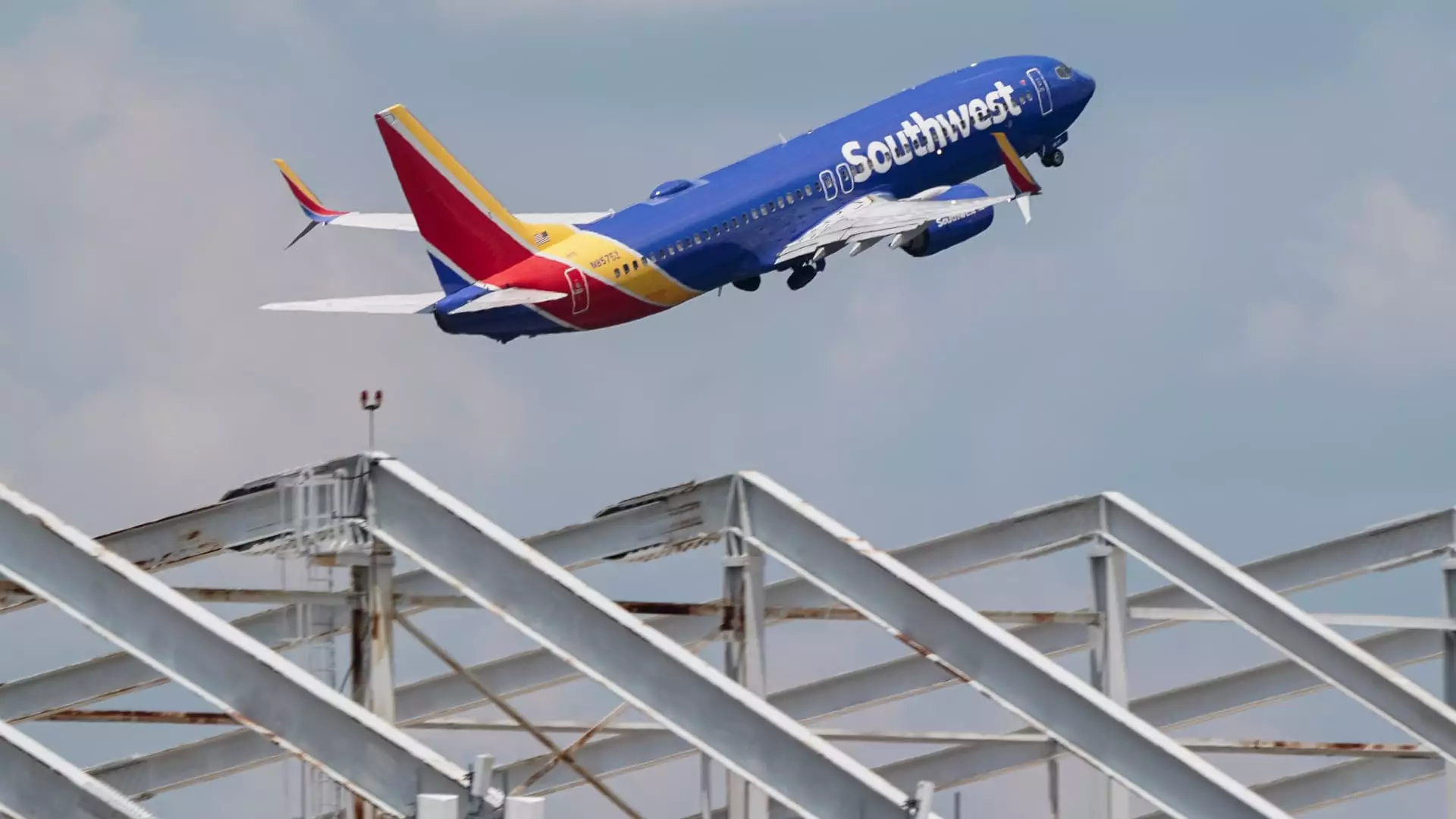Southwest Airlines recently released its third-quarter financials, revealing a notable decline in profits compared to the previous year. Despite this downturn, the airline managed to surpass Wall Street’s estimated earnings, reflecting a delicate balance between financial performance and investor relations. The reported net income slumped to $67 million, translating to 11 cents per share—a staggering 65% decrease from the same quarter of the prior year. However, adjusted figures showed a net income of $89 million, or 15 cents per share, which is a pleasant surprise given analysts’ expectations of negligible earnings.
Complicating the already challenging financial landscape, Southwest faced pressure from activist investor Elliott Investment Management. To navigate this potential storm, the airline negotiated an agreement that successfully sidestepped a proxy fight. This deal, revealed recently, will see six candidates proposed by Elliott joining the Southwest board. This strategic partnership grants CEO Bob Jordan continuity in leadership, which may play a crucial role in maintaining stability as the airline implements significant policy shifts to enhance its profitability.
Looking ahead to the fourth quarter, Southwest Airlines projects a unit revenue increase of between 3.5% to 5.5%, despite a reduction in capacity by approximately 4%. This strategy illustrates the airline’s adaptability in the face of declining profits while still capitalizing on robust travel demand. The airline’s sentiment is echoed in its earnings release, where it highlighted sustained leisure travel demand and strong holiday bookings. Such projections are critical as competitors in the airline industry are also recalibrating their service offerings to ensure profitability, indicating a shared optimism for the travel sector’s trajectory heading into 2024.
In a bid to revitalize its earnings, Southwest has unveiled a comprehensive three-year plan aimed at achieving an additional $4 billion in earnings before interest and taxes by 2027. Key components of this strategy include a $2.5 billion stock buyback initiative and the discontinuation of underperforming flights from Atlanta. This proactive approach positions the airline to streamline operations and enhance shareholder value, ensuring it remains competitive within a challenging market.
Perhaps the most significant shift in Southwest’s operations is the move away from its traditional open seating policy. The airline plans to implement a fee structure for seat selection, alongside introducing options for extra legroom at a premium. This monumental change marks the first major policy shift in over five decades of its service and signals Southwest’s commitment to adapting its business model in response to market dynamics.
While Southwest Airlines navigates a complex financial landscape with declining profits and evolving market demands, its strategic initiatives, active investor engagement, and willingness to innovate position it for potential recovery and growth in the competitive airline industry. With robust travel demand and a focus on operational efficiencies, the airline is poised to continue its legacy as a key player in the aviation sector.

